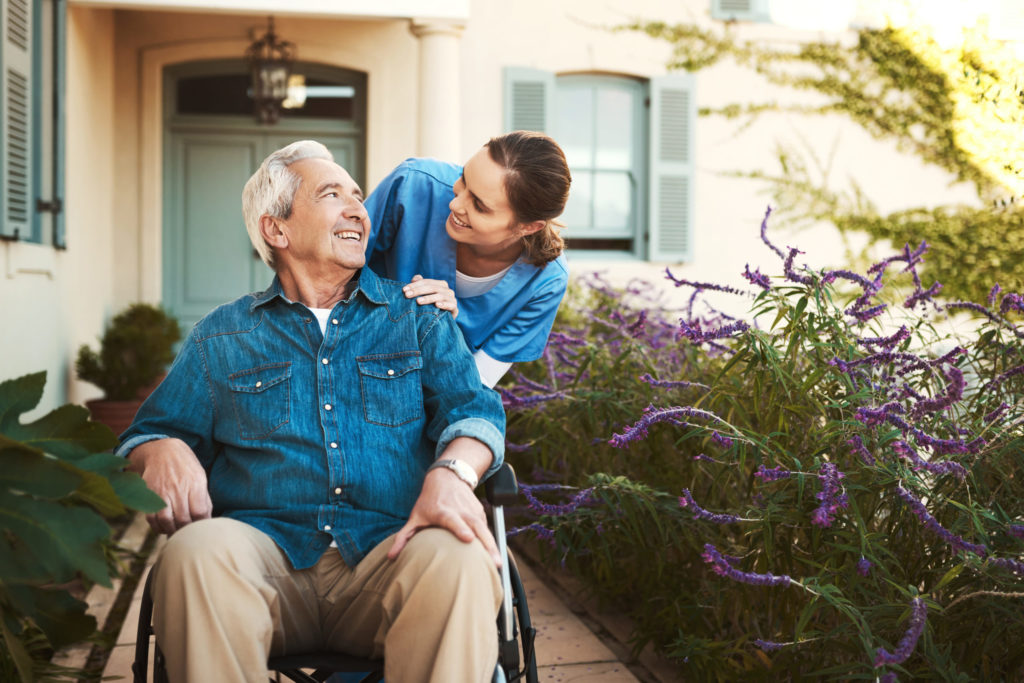How do you make life great for seniors, or at least improve on what’s currently available?
You’re not the first one to ask that question, although you may be thinking of specific seniors in your life and what they want and need to feel good physically, mentally, emotionally, and financially, whether they’re in good health or dealing with cancer or other conditions.
At the individual level, seniors need the basics that every other human needs: shelter, food, and health. But many also can benefit from other things to give their lives more meaning such as support, acceptance, access to social opportunities, access to health resources, general security, and similar needs. They may also appreciate extra protection, such as tools and techniques to improve mobility, drive safer, and keep fit.
Everyone’s situation is different but there are some similarities. Someone who is in good health may be more interested in accessing social activities or travel opportunities, while someone battling cancer or dealing with dialysis may be more interested in finding stable health options close to home. But they also wouldn’t mind learning about the social stuff too.
Seniors living in different parts of the country also may experience different challenges, including access to certain services. A metro community may provide easy and affordable public transportation to hospitals and doctors, but someone living in a more rural setting may find that some of their options are limited or different solutions are required, such as telehealth options.
Since there are so many seniors, and this population keeps growing, there are increasing efforts to identify what this demographic wants and how to make these services more available or more uniform for everyone.
Lending a hand
Some efforts which focus on improving the lives of seniors must come from the local level, perhaps individual family and friend groups trying to make things better for special people in their lives.
These efforts can take the form of committing to spending time with them, whether it’s coming to visit or to take them somewhere on a regular basis. Even a walk around the block at a slow pace might be a good outing for someone who doesn’t get out much and isn’t able to go too far.
Even going with friends or relatives to the grocery store or the coffee shop might be enjoyable. Or, if someone is housebound, a friendly visitor now and then would be welcome.
Creating a schedule, even if it’s more approximate than regimented, can be a nice idea to make sure visitors are always coming, rather than assuming someone else will be there.
If someone isn’t great at sitting around and visiting, they can show their willingness to help in other ways, such as helping with home projects and yardwork.
Friends and family can also do their part by offering respite care for any caregivers. By offering to take someone out or even sit with them, the caregiver can enjoy some time for themselves. Occasional breaks from each other’s company can be helpful to everyone’s stress levels.
One of the constant challenges facing modern seniors is the need for connection. Loneliness can be common: as people age, their children may move out and move away, and their spouses or longtime friends may die. They may have to relocate to a different community, or maybe just stay indoors if they no longer feel comfortable walking around or driving.
Prolonged loneliness and social isolation can be damaging, which the National Institutes for Health have defined. Loneliness is categorized as having a feeling of separation or being alone. Social isolation is defined as not having people to interact with regularly. People can have both, which can be doubly devastating.
Both conditions can increase the risk of depression, high blood pressure, obesity, heart disease, a weaker immune system, or general cognitive decline. They can lead to more frequent or longer hospital stays, and even increase the possibility of dying earlier. People in either of these situations are more likely to abuse alcohol, tobacco, and other legal or non-legal substances, as well as sleep poorly. All of these conditions can further aggravate their already weakened physical and mental health.
Future efforts
Beyond local focus, some senior organizations are trying to look at a bigger picture of what needs are now and what needs will exist in the future.
Various public policy organizations that focus on seniors are seeking more awareness, more programs, and more funding.
For instance, the National Council on Aging continues to push for Congressional support of senior issues. It led the effort for the reauthorization of the Older Americans Act in 2020, and has been pushing to keep this effort in motion for future votes.
The National Academy of Medicine’s Vital Directions for Health and Health Care also signed off on an priority list in 2021 that encouraged current and future U.S. presidents to focus on public health benefit for seniors, which includes care options, end-of-life options, programs, and even a trained workforce ready to work with this growing population group.
Finally, since 1988, American presidents have continued to proclaim August 21 of each year as National Senior Citizens Day. Certainly, our country’s seniors should be celebrated every day, and not wait until summer, but it has been a useful gesture to raise awareness and give attention to this age group.

